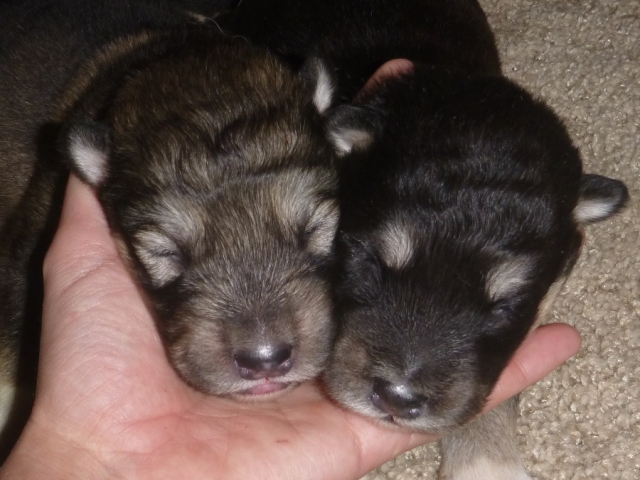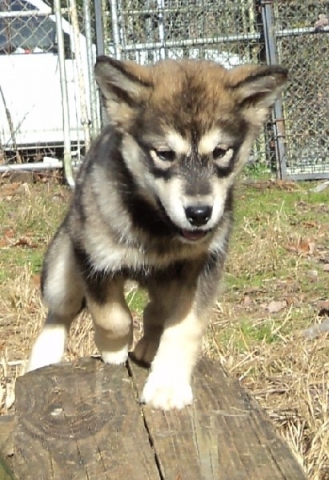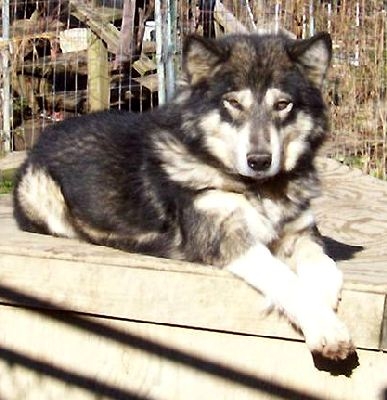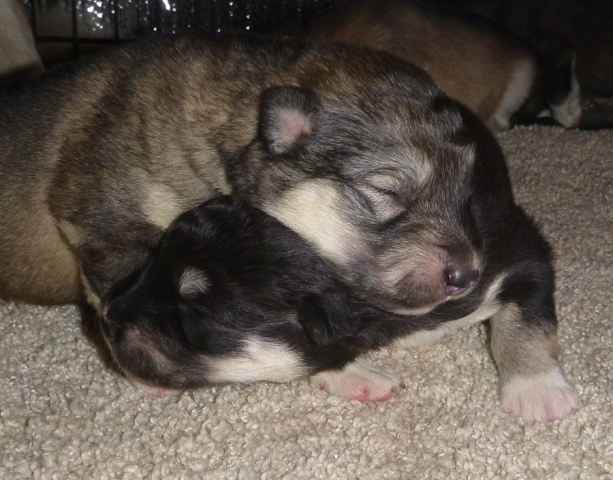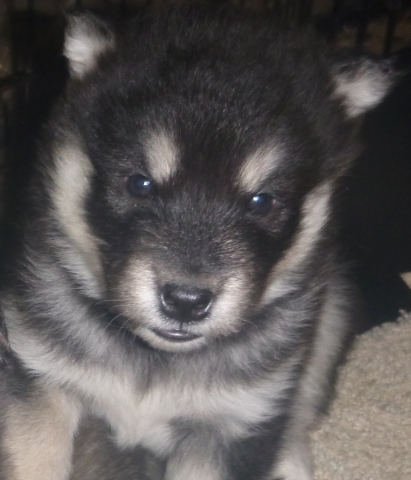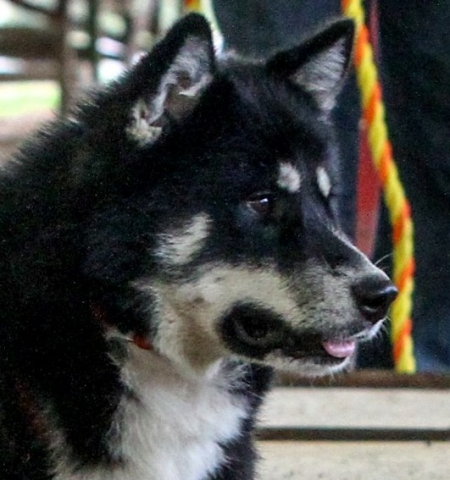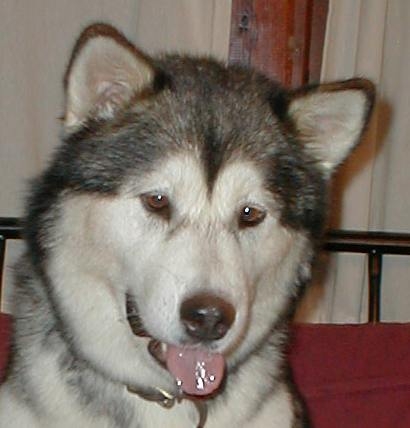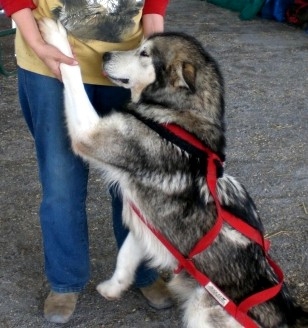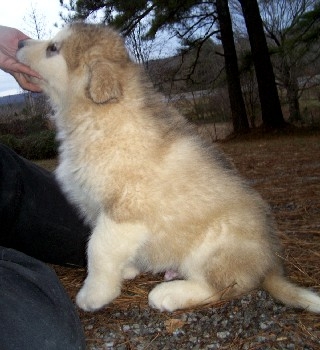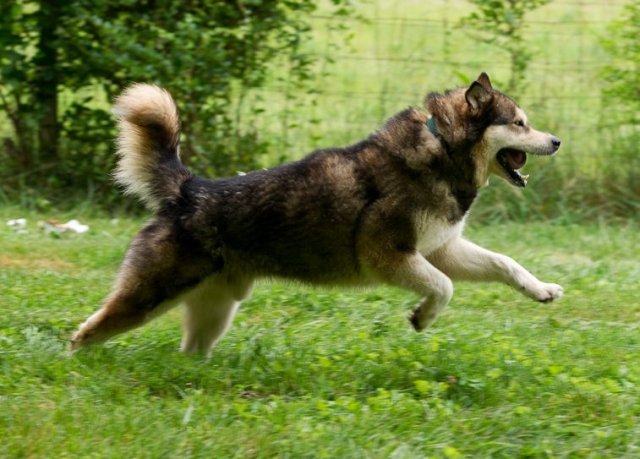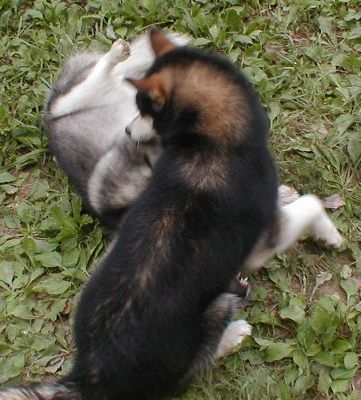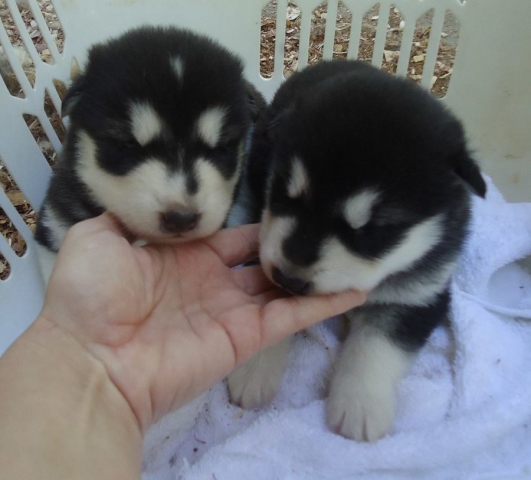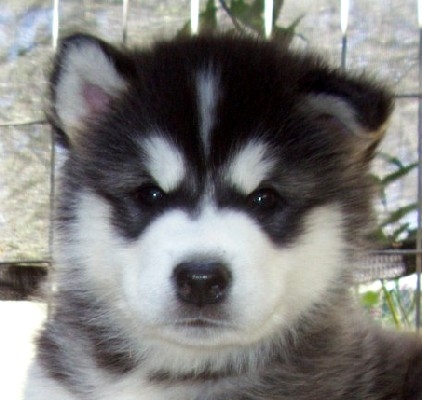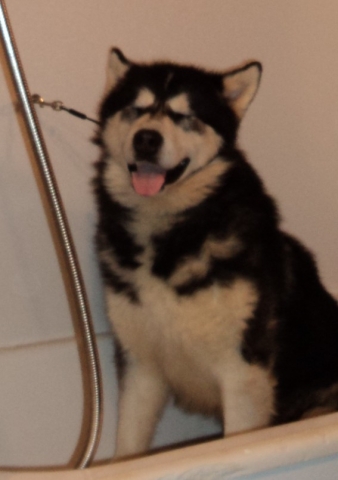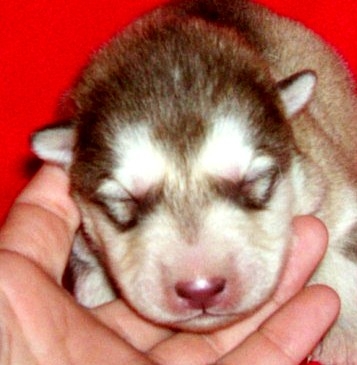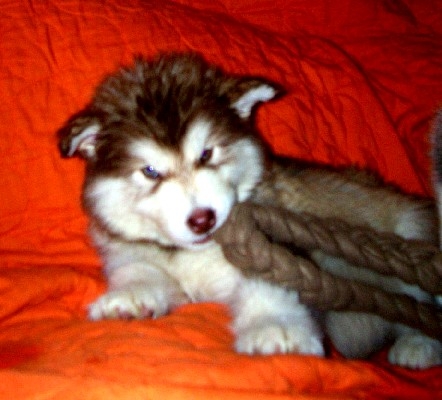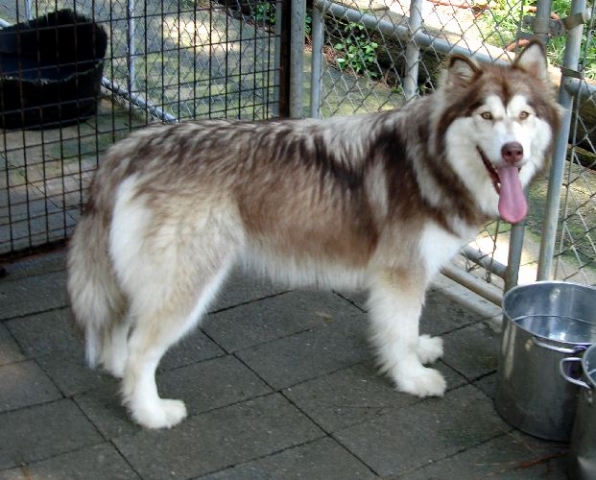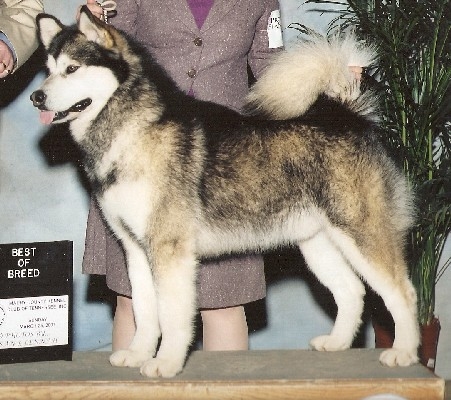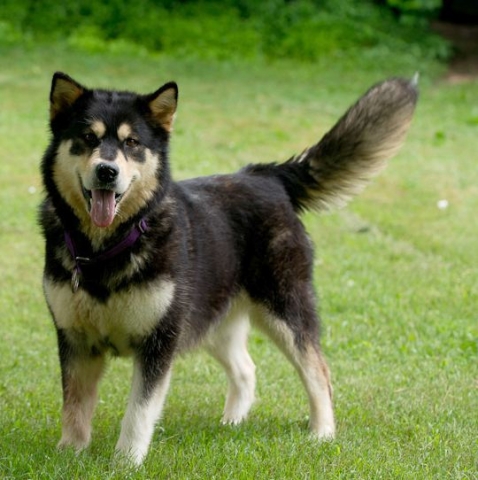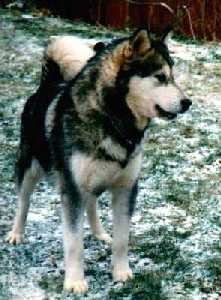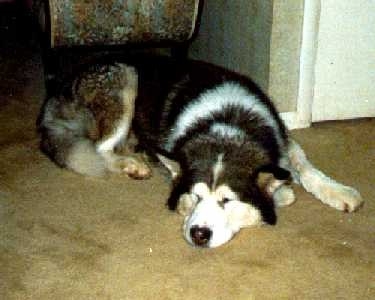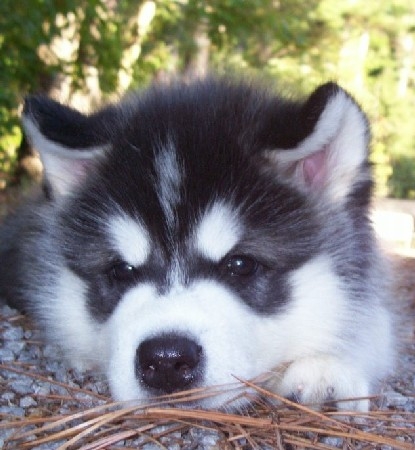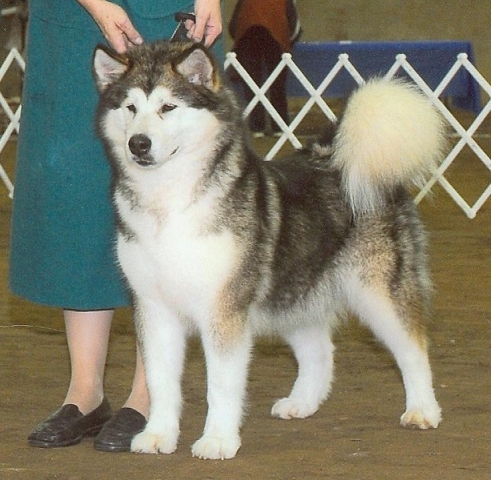See Also Nicole Royer’s excellent & definitive Malamute Coat Color Genetics
“The usual colors range from light gray through intermediate shadings to black, sable, and shadings of sable to red. Color combinations are acceptable in undercoats, points, and trimmings. The only solid color allowable is all white. White is always the predominant color on underbody, parts of legs, feet, and part of face markings.” SNIP
AKC Alaskan Malamute Standard
The AKC approved colors are just about nonsense when you look at the genetics of coat color in Malamutes. A gray sable dog and a seal sable dog are both registered as sable & white, but a red sable dog is registered as a red & white. Black-pigmented dogs have a natural progression of Agouti/Gray/Seal/Black. Red-pigmented dogs have the same natural progression — but are all lumped into one category: Red & white.
Checklist to determine coat colors of Wayeh puppies:
1) Check nose pigment:
– Red/Brown nose pigment = Red & White
– Black nose pigment = another color besides red
2) Check for clearly defined dark and light on face at birth:
– New-born puppy is almost solid gray/black, sooty black, or muddy faced = Agouti & white or (true) Black & White.
– New-born puppy has clearly defined “crisp” color margins on face = another color besides agouti or (true) black
3) Check guard hair banding:
– Only the very tips of each guard hair is black, dog appears gray = Silver & white
– About half of each guard hair is black, appears black-tipped = Gray & white
– Almost all of each guard hair is black, undercoat is white or gray = Seal & White
But it doesn’t stop there…
4) Check for buff, beige, orange or red (not white) undercoat:
– White undercoat = Silver & white, Gray & White, Seal & White, or Black & White
– Buff, beige, orange or Red undercoat = Silver Sable & White, Gray Sable & White, or Seal Sable & White, which have to be registered as Sable & White.
EXCEPT, genetically Grays will often have a buff undercoat (we used to call that Wolf Gray to separate it from Gray, but that’s not PC enough anymore and we can’t use the word WOLF in our colors anymore.) In the same way that all reds are Red & White, only the richest orange colors are registered as Sables. Does it make sense? Of course not. After nearly a century of AKC Malamutes, we only recently got the Agouti option, when Agouti can be argued to be the original color for Malamutes. But that’s a step in the right direction.
AKC color: Agouti & white
genetically: Gray Agouti
Puppy is born almost solid black (on left above), muddy or sooty facial color, without the typical clearly-defined lights and darks, salt & pepper goggles on the sooty face, color lightens as the dog ages, almost indistinguishable from dark gray & whites as adults, black pigment.
AKC color: Black & white
genetically: ______
Puppy is born almost solid black (on bottom), muddy or sooty facial color, without the typical clearly-defined lights and darks, salt & pepper goggles on the sooty face with a distinct BLACK sheen instead of the almost BROWN or GRIZZLED sheen of an Agouti. Sometimes it takes a few days to figure out if it’s a dark agouti or a (true) black. As adults, the whites are often gray or ashy. Colors are not crisply defined.
AKC color: Silver & White
genetically: Gray & White
Puppy is born with crisp facial markings, clear whites, clear color, and coat appears light gray, has black pigment.
AKC & genetically: Gray & White
Puppy is born with crisp facial markings, black guard hair tips with white or buff undercoat, black pigment.
AKC: Sable & White
(But the puppy on the left is a SILVER Sable, the dog in the middle is a GRAY Sable, and the dog on the right is a SEAL Sable.)
Puppy is born with crisp facial markings, black guard hair tips with buff, orange, or red undercoat, black pigment.
AKC & genetically: Seal & White
Pup is born with crisp facial markings, large eye spots, and a defined mask (not muddy or sooty), and the mask often appears solid black at birth, but may lighten as the adult undercoat comes in. A Seal never has the full or extreme mask of a black & white or agouti or (true) black pupies, black pigment.
AKC color: Red & White
Genetically may be Light Red & White, Dark Red & White, Mahogany & White, Red Agouti & White, etc. The reds have the same color progression as the black-pigmented dogs and the sables. Red/liver/brown pigment.
Malamute Coat Markings @ Wayeh
Genetically, Malamutes are “mantled” — white on faces, lower legs, and bellies, with color on top — except all whites. The white spotting gene breaks up the “solid” markings in the white areas or adds extra white into colored areas. So dark on top/light on bottom Mals are either “Solid colored” (which does not mean all black, it just means the expected white areas have a full mask, bands on chest, color down all 4 legs, and a black tail tip). Or Mals have the “Irish spotting” gene which adds MORE white (like blazes, split bars, snippets, withers spots, nape spots, half collars, collars, high white on legs, white tail tips, and mismarks).
AKC Alaskan Malamute Standard – Color
AKC Alaskan Malamute Standard, 1994
“White is always the predominant color on underbody, parts of legs, feet, and part of face markings. A white blaze on the forehead and/or collar or a spot on the nape is attractive and acceptable. The Malamute is mantled, and broken colors extending over the body or uneven splashing are undesirable.”
Solid Markings does not indicate a lack of white, just white in specific zones. These dogs all have full masks (at birth, grays tend to fade off more as they mature), color bands on chest, color down all legs, and black tail tips instead of white tail tips.
Irish Spotting Markings are responsible for split bars, blazes, snippets, nape spots, withers spots, collars, white tail tips, white chests, broken bands on the chest, and high white on the legs.
Then there are the beautiful mismarks which sends some people into a tizzy. But then we all know that symmetrically colored dogs pull sleds straighter.
